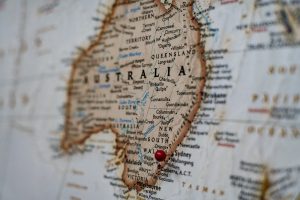In hindsight, 2016 was an odd year for any country — particularly a U.S. ally — to undertake a future-oriented strategic planning exercise. Australia was one such country. That year, it published a closely scrutinized Defense White Paper. Analysts, including here at The Diplomat, judged that undertaking to be the first sign of Australia thinking more strategically about the geographic requirements of maintaining sufficient capacity to operate across the Asia-Pacific region as necessary—all with the intention of upholding the “rules-based order,” of course.
Things changed quite dramatically after 2016: for Australia, and the rules-based order. The election of Donald Trump in the United States and the precipitous decline in U.S.-China relations has made Australia’s neighborhood a lot more challenging. Much of the 2016 Defense White Paper’s prescriptions still have a place, but new developments merit a rethink.
It’s in this context that we might understand the two documents released earlier this month by the Australian government. The first, a “Defense Strategic Update” for 2020 offers insight into how recent developments have changed Australia’s defense requirements. Alongside this update, the Australian Department of Defense released a Force Structure Plan (PDF).
“While the drivers of change identified in the 2016 Defense White Paper persist, they have accelerated faster than anticipated,” the Australian Department of Defense’s introduction to the update observes. In broad strokes, the update looks at Australia’s immediate region — north to Southeast Asia, east to the southern Pacific, and west to the Indian Ocean Region — and sees a declining security environment and greater challenges.
The looming specter of the United States — which is itself in an election year that could wrestle American foreign policy away from the post-January 2017 Trumpian turn — is felt through the document, but Canberra does not criticize its ally for going adrift in Asia.
Instead, the United States features prominently as a continuing cornerstone of Australia’s defense strategy — just not the only one. “The security arrangements, interoperability, intelligence sharing, and technological and industrial cooperation between Australia and the United States are critical to Australia’s national security,” the document observes.
Instead, the big “shift” that arguably has made such an update necessary is a broader change to China’s approach to foreign affairs in its periphery. In this sense, the Australian Defense Strategic Update could not be released at a more apt time — when Beijing is mired in ongoing standoffs with its neighbors in the Himalayas, the South China Sea, and the East China Sea. These factors existed in 2016, when the white paper was written, but the new update highlights unnamed countries pursuing interests “through a combination of coercive activities.”
The prescriptions that flow from this observation in the update are significant for their boldness. Front and center in the update is the notion of investing more in conventional standoff weaponry: specifically, long-range missiles. This development will be a welcome one for many in the strategic community in the United States, where calls for American allies to acquire such capabilities had long persisted — particularly before the end of the 1987 Intermediate-Range Nuclear Forces Treaty last year.
“Long-range lethality will be strengthened through additional long-range rocket systems, protected mobile artillery and enhanced missile development,” the Defense Strategic Update notes. The Force Structure Plan outlines an investment of AU$400-AU$500 million in the procurement of “land based maritime strike missiles” between 2024 and the early 2030s.
A July 1 statement from Australian Prime Minister Scott Morrison’s office specifies additionally that Canberra will seek to acquire the AGM-158C Long-Range Anti-Ship Missile (LRASM) “at an estimated cost of around [AU]$800 million.” Japan, another U.S. ally that changed its perspective on long-range conventional strike capabilities with its 2018 National Defense Program Guidelines, is also procuring the LRASM.
This document also outlines plans to develop a “test and evaluation program for high-speed long-range strike and missile defense, including hypersonic weapons, leading to prototypes to inform future investments.” Integrated air and missile defense feature prominently as well — all with the goal of improving the survivability of Australian forces.
These systems are designed, ultimately, to allow Australia’s armed forces to boast the sorts of long-range strike capabilities that could augment Canberra’s ability to deter adversaries like China in the immediate neighborhood and probably as far as the South China Sea.
By potentially setting up Australia’s onshore and expeditionary forces to better hold at risk a wider range of targets, the country can aspire to rely less on the United States and other partners to deliver the strategic effects it seeks. Partners and the alliance with the United States all remain at the center of Australian strategy, but the new approach considers that Canberra may find itself needing to go it alone when it comes to certain threats.
Needless to say, these capabilities won’t be cheap. “To deliver the 2020 Force Structure Plan, the Government intends to provide Defense, including the Australian Signals Directorate, with total funding over the decade to 2029-30 of [AU]$575 billion, including [AU]$270 billion in capability investment,” the Force Structure Plan notes.
It’s particularly striking to see a country like Australia lay out such an ambitious set of procurement goals in the midst of a pandemic that has many other democracies in the region — and around the world — reconsidering their military spending. The domestic political reception to the new Update and Force Structure Plan appears positive, however.

































